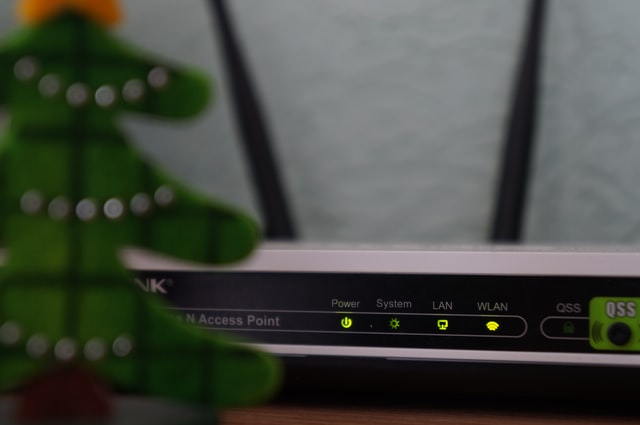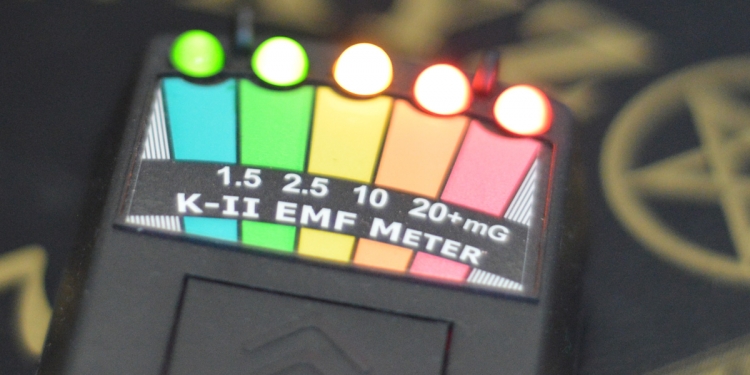Radiation exposure is more common than you might think. In fact, many people are exposed to radiation at home, even if they aren’t aware of it. Electromagnetic fields or EMFs are created when electric current flows, and the strength of the magnetic field varies with power consumption. However, EMF strength remains constant, so it’s important to understand how to limit the amount of radiation you’re exposed to at home. This guide explains what happens after EMF exposure and how you can practice some radiation safety at home to keep you and your loved ones healthy.
What are Electromagnetic Fields? Where Do They Come From?

Electromagnetic fields are a combination of electrical voltage and electric current. These invisible areas of energy are also referred to as radiation. An electric field can exist alone, even with no electric current flowing through it. But when the current flows, the magnetic field’s strength increases. EMFs are found everywhere in the environment, but you cannot see them with the naked eye. The buildup of electric charges in the atmosphere from thunderstorms produces electric fields. The earth’s magnetic field serves as a compass needle used by some wildlife for navigation. Aside from these natural causes, technology and electricity can also create EMFs through X-rays and even through your home’s electrical sockets. Radio waves that transmit information through radio stations, smartphone base stations, and TV antennas are also sources of electromagnetic frequency.
What Happens When You Are Exposed to Electromagnetic Fields or Radiation at Home?
This type of exposure is not new. However, exposure to humans has increased throughout the 20thcentury. Thanks to changes in demand for electricity and technological developments, more artificial sources of EMFs are in use. All humans are exposed to some form of weak electric and magnetic fields both while at work and at home. The transmission and generation of electricity, kitchen appliances, and telecommunication devices are all sources of exposure. Thanks to chemical reactions, a minute amount of electrical currents flow through the human body. Your nerves send signals to the brain by transmitting tiny electrical impulses. Higher levels of EMF exposure can be a cause for concern. So, what happens when you’re exposed to these electromagnetic fields? Let’s take a closer look at different types of EMF exposure and how radiation at home can affect your health and well-being.
Types of EMF Exposure

You may be concerned about the different types of radiation and EMF exposure you encounter. This radiation varies from high-energy or high-frequency to low-energy or low-frequency radiation. Here are some examples.
- X-rays: This high-level, ionizing radiation may affect cells at the atomic level by removing an electron from an atom or “ionizing” it. X-rays can damage the body’s DNA and cells with regular exposure.
- Gamma rays: Gamma rays are also a high-level EMF that could potentially cause genetic mutations and cancer. Sources of gamma rays include radon gas, CT scans, and some forms of cancer treatment.
- Higher-energy Ultraviolet (UV) rays: Ultraviolet rays come from the sun, a significant cause of skin cancer. Limit your exposure to UV rays by regularly applying sunscreen, staying out of the sun during peak hours, and using protective hats, eyewear, and clothing.
- Radiofrequency (RF) radiation: This form of non-ionizing radiation is one of the most common types of radiation at home. It’s emitted from wireless devices like tablets, laptops, and smartphones and may also come from TV signals, radar, MRI machines, and satellite stations.
- Visible light: EMF from visible light can occur naturally, such as the light from the sun. It may also come from manufactured sources like artificial LED lights and high-powered lasers and is considered a low-frequency form of radiation.
- Infrared: This type of light is commonly used in saunas. While it is a non-ionizing form of radiation, it’s still best to limit your exposure to infrared light as much as possible to prevent symptoms or side effects of too much exposure.
The Effects of Electromagnetic Radiation on the Human Body
It’s essential to understand how exposure to radiation at home and electromagnetic radiation affects your health. Some studies have found a link between EMF exposure and higher rates of leukemia, brain tumors, cancer, and other health issues. Increased or ongoing exposure to electromagnetic radiation can affect the blood, cells, organs, and tissues in various ways. If you’re concerned about your exposure to radiation at home, it’s important to be aware of the symptoms.
EMF symptoms

While symptoms related to EMF exposure may vary, there are some common ones to be aware of. Here are a few possible EMF exposure symptoms that you should look for if you’re worried about radiation at home.
- Headache: Radiation-related headaches may range from mild to severe but could intensify over time and become more frequent.
- Tremor: This term describes an uncontrollable shaking of the muscles or hands. You may also notice a tingling or burning sensation on the skin.
- Dizziness: Many people experience severe dizziness after prolonged or intense EMF exposure.
- Memory loss: Some studies show memory loss as a symptom of electromagnetic field exposure, although it may be related to other health issues, too.
- Loss of concentration: The loss of your ability to concentrate or lack of focus could be another possible symptom of radiation exposure.
- Sleep disturbances: Some people claim to experience insomnia or frequent waking during the night resulting from EMFs.
If you’re concerned about the potential for EMF sickness, talk to a healthcare professional as soon as possible so you can get the treatment and help you need.
Radiation at Home: Safety Tips

Here are some things you can do to improve safety regarding exposure to radiation at home.
- Disable wireless functions: Smartphones and tablets that connect to Wi-Fi emit EMFs constantly. To reduce your exposure, switch to a wired mouse and keyboard for your computer and turn off your Wi-Fi connection whenever you can. Switch to wired Internet whenever you’re able to reduce your EMF exposure.
- Keep EMF sources at a distance: Since EMF strength decreases with distance, the further away the sources are, the safer you’ll be. Simple things you can do include switching to a plug-in alarm clock and avoiding using electric blankets at night. Keep baby monitors at least six feet away from your bed and your baby’s crib.
- Use your smartphone safely: You should never carry your smartphone close to your body when you don’t need to. Place it at a distance so that your body isn’t constantly contacting it. Talk on speakerphone whenever you can to keep the phone away from your head. You can also find some EMF-blocking smartphone cases that may shield you from too much exposure.
- Prioritize sleeping areas: Most people don’t realize they’re near a radiation source during the night. Turn your smartphone to airplane mode so it’s not connected to Wi-Fi. Remove unused or unneeded devices from your bedroom. There are also radiation blocking wall paints and EMF shields available that can add another layer of protection.
- Unplug each night: A simple rule is to disconnect and unplug any EMF-emitting devices at night. This reduces your exposure, but it saves energy, too.
- Identify overlooked sources: Perform a “radiation audit” of your home to look for other sources. Wireless printers and Wi-Fi boosters are two common culprits. Anything you can unplug or disconnect will help reduce radiation at home.
- Overview article: 7 Things You Can Do to Protect Yourself from WiFi radiation
Best EMF detectors for 2022

1. ENV RD-10 EMF Indicator
The ENV RD-10 is a small radiation detector that fits in your pocket and can be carried anywhere. There isn’t any kind of LCD display. The color-coded (green, yellow, and red) indicator bar and table chart allow you to rapidly determine the level of radiation in the area. Carrying it around in an area with a high emf level will fast cause you to become alarmed.
Aside from that, this emf tester is also an emf meter, which means it can measure electromagnetic field radiation in greater detail. You can measure with its emf meter app on your smartphone. Meanwhile, you can monitor and record emf exposure on your laptop or computer using the RD-10 program, which can be installed on either Windows or Mac-based devices.
You may save the file, convert the data to a spreadsheet, and visualize the data on Google Maps in addition to the connection benefits. Because it’s rechargeable, measuring the radiation of your entire city can be a fun experience.
2. TriField TF2 EMF Meter
Trifield TF2 is our third best EMF meter because to its vintage appearance and excellent functionality. It has a wide frequency range (40 Hz–6 GHz) that allows it to easily measure all three forms of EMF radiations.
The electric field, magnetic field, and radiofrequency radiation can all be measured with it. As a result, practically all EMF radiation sources may be detected using this equipment.
Peak reading, current reading, unit reading, battery level, and graph bar are all displayed on the screen. The peak reading changed every couple of seconds on the top screen, while the current reading changed as well. Depending on the mode, the reading is presented as a number with a unit reading.
3. Cornet ED-88T EMF Meter
The Cornet ED-88T is the second finest EMF meter that we think is worth sharing. Because of its wide frequency range (50 Hz–8 GHz), this is an outstanding EMF meter. As a result, it can detect all three types of EMF (electric, magnetic, and radiofrequency) in a single instrument.
The Cornet EF-88T is a basic device with a lot of benefits. When a particular level of exposure is detected, it will sound an alarm. The radiation reading, maximum reading, the latest 30 signals on the graph bar, and the frequency of the signal being chosen could all be shown on the screen.
4. Erickhill RT-100 EMF Meter
This Erickhill EMF meter may be suitable for you if you are on a tight budget. As you can see from the product image next to it, it monitors both magnetic and electric fields.
This device can detect and measure radiation from your telephone, power line, computer, appliances, television, and a variety of other DC and AC powered devices. It’s also used by some for ghost hunting.
However, this model is incapable of detecting RF radiation. As a result, you can’t use it to monitor the radiation from wifi, your phone/computer/tablet when it connects to the internet, a cellular tower, or anything else. It can’t possibly be used to measure 5G radiation.
5. GQ EMF-390 Multi EMF Radiation Meter
The GQ EMF-390 is the most accurate EMF meter available. It’s fantastic, and it’s quite reasonably priced.
It covers emf radiation measurements in the 40Hz-10GHz frequency range. Nonetheless, of the other emf meters on this website, it has the widest variety of frequency responses.
It can detect and measure radiation from your cell phone, computer, power line, television, appliances, cell tower, and other sources.
It has an LCD panel that is interactive. The three measurements (EMF, RF, and EF) can all be read at the same time; there’s no need to switch between them. The MF (magnetic field) is displayed in milli Gauss, the EF (electric field) is displayed in V/m, and the RF (radiofrequency) is displayed in mW/m2.
Radon and Health

Last but not least, another way of toxicity at home is Radon, Radon is a radioactive gas that is produced naturally when radioactive metals such as uranium, thorium, and radium break down in rocks, soil, and groundwater. People are generally exposed to radon through the air that enters through cracks and crevices in buildings and residences. Because radon is a naturally occurring gas, individuals are constantly exposed to it.
After cigarette smoking, radon is the second biggest cause of lung cancer. You raise your risk of lung cancer if you smoke and reside in a home with high radon levels. The only way to find out if you and your family are at risk of significant radon exposure is to have your house tested.
According to the EPA and the Surgeon General’s office, radon is responsible for more than 20,000 lung cancer deaths in the United States each year. Radioactive particles from radon gas can become stuck in your lungs when you breathe it in. These radioactive particles raise the risk of lung cancer over time. It could take years for health issues to manifest.
Lung cancer is more likely to develop in those who smoke and are exposed to radon. The Environmental Protection Agency (EPA) recommends taking steps to decrease radon in houses with radon levels of 4 picocuries per liter (pCi/L) or above (a “picocurie” is a typical unit for measuring the amount of radioactivity).
With a few simple changes to your home and lifestyle, you can protect yourself and your family from radiation at home. Due to increased exposure to EMFs, more people begin to experience the dangerous symptoms and side effects. Keep the tips from this guide in mind to live a healthier life without worrying about excess radiation.
Ways to Prevent High Radon Levels at Home
- Stop smoking and discourage smoking in your home.
- Smoking significantly increases the risk of lung cancer from radon.
- Increase airflow in your house by opening windows and using fans and vents to circulate air.
- Natural ventilation in any type of house is only a temporary strategy to reduce radon.
- Seal cracks in floors and walls with plaster, caulk, or other materials designed for this purpose.
- Contact your state radon office for a list of qualified contractors in your area and for information on how to fix radon problems yourself. Always test again after finishing to make sure you’ve fixed your radon problem.
- Ask about radon-resistant construction techniques if you are buying a new home.
- It is almost always cheaper and easier to build these features into new homes than to add them later.
5 Ways to Reduce EMF Exposure at Work

Radiation exposure in a work and office setting is quite common. Here are the top five things you can do to help lower your exposure to potentially dangerous EMFs.
Keep your router, wireless printer, or Wi-Fi booster at least 20 feet away from your desk and everyone else’s desk.
- Instead of a cordless phone or smartphone, use a wired phone to talk while you’re working.
- Disable all Bluetooth and wireless connections on your smartphone, and only use them when it’s essential.
- If you use a space heater at work (or at home), use a ceramic heater instead of a traditional infrared or electrical heater.
- If you use speakers while working, keep them plugged in several feet away from your desk.
With a few simple changes to your home and lifestyle, you can protect yourself and your family from radiation at home. Due to increased exposure to EMFs, more people begin to experience the dangerous symptoms and side effects. Keep the tips from this guide in mind to live a healthier life without worrying about excess radiation.




